I know someone who is dead broke and living in a small apartment, on the government dole – despite having both earned and inherited many hundreds of thousand dollars over the course of her lifetime. In part, this person is broke because she spent hundreds of thousands of dollars on new cars over the course of her lifetime.
Five expensive new cars, starting with a 1974 Oldsmobile 98 (base price $5,869 when new; equivalent to $30,763 in 2018) followed by a ’77 Olds 98 (base price $6,786 when new; $29,230 in 2018 dollars) then a 1983 ’98 ($13,018 when new; $33,541 in today’s inflated dollars) then a 1987 Lincoln Mark VII LSC (base price $25,683 or $58,607 now) and – finally, at the end of the proverbial road – a 2000 Lexus RX300 ($33,000 when new – the equivalent of $49,263 today).
Whoosh – there went $201,404 and change.
This is a low figure, too. It is calculated on the base price of each car – not the optioned-out price. Since I know the person – and the cars involved – personally, I know for a fact that she paid considerably more than the base price for each of these cars. The total is probably closer to $225,000.
And the figure does not count the insurance, property taxes and cost of maintaining and repairing those cars, which – figuring very conservatively – must have been at least $5,000 per car over its lifetime.
Add another $25,000 to the tab.
It is halting.
Almost – and probably more than – half-a-million dollars that could have gone toward appreciating assets or at least toward savings was instead spent on disposable appliances not fundamentally different from toasters – with the one important difference that toasters won’t bankrupt you while new cars will.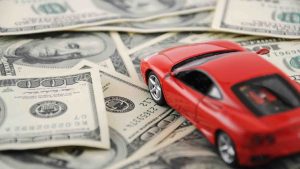
Especially high-end new cars, which depreciate titanically – exactly the right word.
Because their value sinks almost as fast as the famed luxury liner did. It is as predictable as Pravda during the Brezhnev years that if you buy any high-end luxury car this year, in about six years, it will be worth about half what you paid for it.
The main reason for this is that the initial value of high-end luxury cars is mostly a function of their being “the very latest thing.” And once they’re not . . . .
Also, ordinary cars now generally come standard with most of the high-end features which used to be exclusive to high-end luxury cars. For example, power everything, climate control AC, a very good factory sound system, heated seats and leather, etc. All these things are available in $20,000 Corollas – which makes it hard to understand what you’re getting when you buy a $50,000 Mercedes but easy to understand why the $50,000 Mercedes will be worth $20,000 (or less) five or six years from now.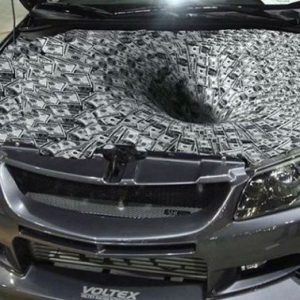
My broke friend would have done much better buying a Corolla – or a used Mercedes.
The other big mistake she made – which you may have noticed from the timeline – is not keeping the cars she bought long enough to make them work for her rather than bleed her. Trading in a high-end car every five years or so – as she did – coincides exactly with the lowest point of the depreciation trough.
She bought high – and sold low.
Had she kept the cars 50 percent longer – ten years instead of five or so – she might not have lost 50 percent of her “investment.” And if she’d kept them long enough, she might have recovered some of her investment.
The rate of depreciation decreases after about eight years – and eventually stabilizes. You reach a point at which the value of the vehicle remains fairly constant so long as the vehicle is still functionally sound. And it is at this point that the vehicle becomes – if not an “investment” – then at least a kind of fungible asset. If it’s worth say $3,500 this year it will probably be worth about the same next year, assuming it remains functionally sound. This is true even though miles will be added. After a certain point, that matters less and less – so long as the vehicle remains functionally sound.
Such vehicle are also sound purchases – in part because it doesn’t take much to purchase them (most people can buy them outright, so no payments and no ongoing debt; also much lower cost to insure and negligible taxes, which are based on average retail value) and in part because they have already depreciated to the extent they are going to depreciate until they’re no longer functionally sound.
As an example of that – vs. the example of my now-broke friend – I submit myself. I’ve never bought a new car, high-end or otherwise. I’ve always bought older, already depreciated cars, as follows:
1973 VW Beetle (bought used for $700 circa 1986; $1,609 in today’s dollars) then a ’74 Super Beetle (bought used circa 1992 for $1,200; which amounts to $2,189 in 2018 dollar) followed by a used ’98 Nissan Frontier (bought used in 2003 for $7,000 – or $9,707 in current dollars) and then my current vehicle, another Nissan Frontier ($7,500 in 2008, equivalent to $9,336 today).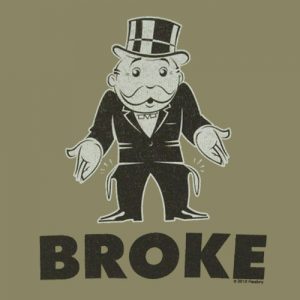
So, just under $23k (plus insurance, taxes and maintenance) over the same span of time as in the example of my friend who whooshed through a quarter-million.
Sure, she got to drive high-end new cars and I drove older cars without the cachet or the climate control.
But I’m not the one who’s broke – and living on the government dole.
. . .
Got a question about cars – or anything else? Click on the “ask Eric” link and send ’em in!
If you like what you’ve found here, please consider supporting EPautos.
We depend on you to keep the wheels turning!
Our donate button is here.
If you prefer not to use PayPal, our mailing address is:
EPautos
721 Hummingbird Lane SE
Copper Hill, VA 24079
PS: EPautos magnets are free to those who send in $20 or more. My latest eBook is also available for your favorite price – free! Click here. If you find it useful, consider contributing a couple of bucks! 










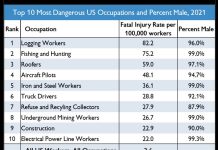
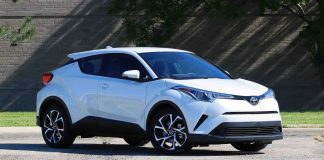
Lexus LS400 or LS430.Find one with service records,maintain it and enjoy fine driving on the very cheap.
Hi Fred,
Yes! The early LS sedan was one of the all-time greats… and still is!
I have a saying, “Anytime you buy or sell a car, you lose money!” Therefore, do it as infrequently as possible. Also, keeping a fleet (for teenage drivers) is $$$. My max was six cars plus motorcycle. (Plus riding lawnmower, having one of them is just like having another old car w/fixing!!!) One can spend a lot of money on a car, or one can save a lot of money on a car, just like Eric has pointed out.
The example of his friend is *the w-o-r-s-t* way to manage your vehicular transportation needs! She’d been better off leasing. -actually, I do understand leasing as a way to keep your transportation costs fixed, even if they are fixed at a higher rate.
Today’s old cars are great in that once they fully depreciate, the dollar value of the utility they provide is far and above what their market price is. I think that is only true nowadays b/c older cars are reliable and a good specimen can run with little $$ for long periods of time. Probably not so much in the long ago past (before the ’80’s) orrrrr in the future with all the electronic gizmos, turbos, CVT’s, and nanny state safety crap. (Hence Eric’s assertion – to which I agree – that the “golden age” of cars was mid 90’s to mid 2000’s) I’m curious to see how well the long term Direct Inject, Hybrid batteries, and Eco-Boost types of cars hold out.
Once any old car gets too expensive to fix, then the paradigm we’re all talking about here evaporates. I think the new cars of today will be way too expensive to fix when they become fully depreciated. If the CAFE were relaxed, then mechanical designs could revert back to those of the 2000’s. But that is very unlikely to happen.
If I still had my ’72 911S, the first car I bought after coming back from the ‘Nam I could retire on what that is worth today but alas…..
I have had several truly nice vehicles over the years and never regretted a single one of them – even the Fiero GT LOL.
Car Costs (1982-present)
75 Monte Carlo $1,479.14
83 Toyota Pickup $9,127.32
84 Volvo DL $14,204.32
85 Volvo GL $8,165.27
90 Subaru Legacy Wgn $7,300.00
88 Ford Festiva $5,994.80
79 Brown Volvo Wgn $711.92
Red Sentra +$300.00
White Sentra $100.00
91 Subaru Legacy Sdn $1,000.00
94 Nissan Pathfinder $23,038.00
96 Honda Odyssey EX $17,074.41
98 Mazda B3000 Pkup $17,456.46
01 Subaru Legacy Wgn $18,534.09
03 Honda Element $9,652.42
94 Honda del Sol $3,200.00
04 Saturn Vue $9,499.04
08 Honda Fit $5,339.10
04 Honda Element $13,143.39
13 GMC Terrain $29,889.04
Total cost to Buy: $194,668.72
20 cars averages to $9,733.43 per car.
Over 35 years equals $5,561.96 per year or $463.49 per month
This is just cost to buy minus trade in/sale price. Not counting finance charges, insurance, gas, maintenance, accessories, paint jobs, detailing, car washes, repair fees, registration yearly.
I made this list to point out to my son how much it costs to own cars.
It’s the insurance mafia that gets me. Otherwise I find cars pretty cheap. A couple percent of my income after deducting what I would have to spend on transportation anyway. But my secret is keeping cars for a long time. I still have every car I’ve ever had sans one. And one that was never legally mine.
Hi Brent,
Insurance is a huge impediment/burden. Even to own one paid-for vehicle entails paying rent for eternity… to the insurance mafia. I have already been mulcted of least 50 percent of the value of my 2002 truck in extorted mafia payments for “coverage” I would not buy were I free to not buy it… for the same reason I do not buy health or home insurance. I do not wish to live to work to pay for “coverage.”
Insurance-at-gunpoint imposes an enormous financial burden but people do not see it anymore. If you add up the mandated and the voluntary payments, it totals out to a mortgage payment for most people. A second mortgage.
No wonder we’re all broke!
People just accept company town serfdom. I want to find a way to drop out, but I was born too late for that it appears.
Morning, Brent!
I, too, contemplate dropping out. Especially now that I am by myself. But, I’m not ready just yet. There is still work to do. I am privileged to be able to spread heretical ideas to a fair number of people and consider this important; I will keep on keeping on until I can’t anymore. Also, I still hold out the faint hope that maybe I’ll meet a decent woman one of these days. I am not a completely solitary ape by nature.
But, I get it.
The thought of just cashing out everything – even the TA – and then buying a tract of land in a very remote area (one where property taxes are extremely low) and putting a paid-for small house/cabin on the thing and just spending my days reading, going for walks and such… yeah. I definitely get it.
By dropping out I was thinking more the opposite of cashing out.
Have you ever heard of the Lee Roy Hartung Collection? Well more of hoard really. This is probably how I would have ended up had I been born earlier. Now it’s just plain too expensive and the government would be after such a person daily. He lived on a forgotten plot of land in the NW burbs in this wondrous pile of junk.
https://youtu.be/KQZbDC4BakU
https://youtu.be/qGBJ962eRGc
Eric, I’ll bet your female example qualifies for Obastardcare subsidies by virtue of her impoverished circumstances…
Hi Ernie,
She does.
Meanwhile, gets mad at me when I point out why she’s broke – and point out that I’m able to avoid being broke by living below my means, she draws herself up and gets angry with me.
The last generation where women widely understood living below one’s means I think reached adulthood in the great depression. Now a days it’s even become a scarce concept among men.
“The last generation where women widely understood living below one’s means I think reached adulthood in the great depression. Now a days it’s even become a scarce concept among men.”
It has… and many men will accommodate women who insist on living beyond their (and his) means, too.
Eric, are you related to this person?
I have a 2001 and 2003 Corolla, both still run like a Swiss watch and I plan on keeping them until they fall apart. Sadly the ‘01 is getting close to that due to rusting thanks to the massive amount of road salt used here each winter but every additional year I get out of it saves money on insurance and excise tax. Hope when it finally dies I can find a decent pre 2010 model without all the electronic spy crapola that seems ubiquitous nowadays.
The problem isn’t buying new cars it is buying them often while trading in or selling the previous one. If keeping the car 15-20 years or more the depreciation doesn’t mean squat and having it from new pays back if you took care of it.
There are people who buy used cars, trash them in short order, then buy another. They too burn through cash quickly as well. So it’s always how you take care of stuff and how long you keep it.
I have always bought new cars but put a lot of miles on them, I think the math works in my favor, that is my story and I am sticking to it.
The only new vehicle I bought new was a 2000 Chevy C3500 single cab and I still have it. It has just turned over 250,000 miles and is a strong runner. Any problems are just the normal wear items. I do baby it meaning it gets it’s oil changed at 5000 miles, a complete tranny refill and filter at 60,000 and tuneup every 50,000. I pull a 30′ travel trailer with it all over the states.
Long live the LS!
Well, I am guilty as charged. I have always loved cars, (until recently, not interested in any of this new crap). You got me to sit down and make a list of all the cars I’ve owned in the last 50 years. I come up with about 60! Now granted, only a half dozen or so were brand new cars that I kept for awhile. Most were shitboxes that I kept for just a few months, weekend toys, cars that I used for work when they were reimbursing mileage, or stuff that I got a great deal on and just flipped. Gawd, I don’t think I could even guess how much I’ve spent over the years. On the other hand, you only live once, and I’ve enjoyed almost every car I’ve ever had – and I’ve had some pretty cool stuff – Corvettes, Mustangs, a 68 Road Runner, 69 GTO, Z3, Miatas. I’m retired and financially somewhat comfortable, so I guess it doesn’t matter too much at this point. I just can’t help myself, as I mentioned in an earlier post, my son was getting screwed on a trade in of his Scion, so I just bought it for what the dealer was going to give him. I need that car like I need a hole in the head, but what the hell. Wife says I have a disease, she’s probably right but at least she’s used to it by now!
Well, in 2004, I bought a brand new Acura TL, with the hard to find 6 speed manual, and exactly the color and options I wanted. Loved it then. Fourteen years later, it’s still parked in my garage…and I still love it. I don’t feel that I made any kind of mistake buying brand new. It seems like a screaming bargain to me.
Depreciation, loss, and/or profit are all hypothetical abstracts, until you sell. So don’t over-generalize. It “is” possible to buy new and win big. But I’ll admit it’s tricky. And it doesn’t happen all that often. 😉
Same here. Both cars I bought new I factory ordered just the way I wanted. They are my cars in every way. Used cars are never like that. There’s always something that the PO did or was chosen by someone else that isn’t quite right.
What’s more, luxury brands like Mercedes-Benz, BMW, and Jaguar actually are less reliable than economy brands like Honda, Toyota, and Subaru, not to mention more costly to fix. So there’s more expense.
And on top of that, Chevy/Cadillac, Ford/Lincoln, and Toyota/Lexus are on the same basic platforms and same powertrains. You’re paying for just a good ornament.
I miss the days when some luxury cars were actually forever cars. I guess the fashion of looking rich just doesn’t allow for many buyers in that market these days. Gone are the days when rich people or even people of more ordinary means would buy a Rolls Royce or something and then keep it in the family for a century.
Hi Brent,
If I ever have discretionary money again, I’d really like to buy a mid-late ’70s full-size luxury coupe; I’d even settle for a mid-size one (e.g., a Cutlass or Monte Carlo). These are my speed. Love the ride, the tufted bench seats and the complete absence of saaaaaaaaaaaaaaaaaaaaaaaaaaaaaaaaaaaaaaaaaaaaaaaaafety peremptoriness. Gibs me a ’78 98 Regency with a 403 and I will be a happy dude!
A co-worker recently bought his parents’ one owner ’79 Lincoln Town Car, 30k miles and had it shipped from Ohio to Texas. Aside from a few minor issues (caliper froze, small leak in the exhaust) it’s great inside and out. Don’t think he’s gonna sell, though.
Probably has the 351M (combined 351, with the 4.000 bore and 3.500 stroke, of the Windsor and Cleveland families) in the Town Car, and those “Gawd”-awful opera windows! Stock up on a rebuild kit and/or throttle shaft bushings, EGR valve, VVT valve, and possibly get a spare Catalytic converter as in time, these parts will be “Unobtainium”. Without them, the car becomes unfixable over a minor part, which is sad, but happens often, especially if you still have to “evade the Dragon” (e.g., pass “Smaug” (Smog))
He seems to have a good handle on parts. Once past 25 years here in Texas it’s a safety inspection only – they don’t open the hood or check under the car (unless something is dragging). Brakes, lights, horn, wipers, etc…. The old air pump was seized up and I told him just to remove it – even if they open the hood, most of the kids working the inspection stations are younger than the car…
I wish I had the time. I don’t even need much money since there’s an ’82 Olds 88 Royale (Olds 307 V8) sitting in my garage waiting…. and waiting…
My friend Tim knows where there is a complete/not-molested and in good condition ’84 Cutlass with its original 307. Car has T-tops, too. I want it… badly.
But I am just treading water… so it’s a no go for now.
Eric, I’ve really been craving a ’75 Sedan de Ville. I loved those pillarless sedans. But they weren’t good for saaaaaaaaaaaaftey!!!!!
Hi Handler,
I love those bi de Villes, too! And as far as saaaaaaaaafety: They were made of heavy steel, had full perimeter frames. I submit they are very saaaaaaaaaaafe!
I was considering my Trans-Am the other day; it is similarly constructed. The hood is a battering ram made of thick, reinforced steel. It would take a lot to bend it. A lot more than the paper thin steel (and aluminum) sheets being used in the new stuff.
They were safe. Plus, you could actually see out of the damn things.
I saw a new F-Pace at the Shell today. Man, that rear window is freaking small. It wouldn’t be hard to backover a kid or dog. Very good-looking vehicle, though.
In the pre-war era, you could get anything your heart desired through coachbuilders. If you had conservative tastes, you went to Willoughby. For the ones that had to show off, you went to somebody like Bohman & Schwartz.
Hi Handler,
Excellent point! And another example from history of the freedom which once existed. Imagine. Contracting with anyone you wish to build whatever car you like, according to mutual agreement.
It is so easy to forget… and to grow accustomed to how things are now.
And those coachbuilt luxury cars were works of art and are extremely valuable today. There’s not a single modern car that will be worth that 75 years from now.
There was a guy that had Rolls-Royce design and build a bespoke coupe for him, and it ended up costing $12.8 million. Before regulations, a fully optioned bespoke Duesenberg would cost $30k, which is close to $600k in today’s dollars. That guy had to be sniffing glue to spend that kind of dough to customize a flimsy, bloated modern car. Terrible proportions, too.
Hi Handler,
Indeed. And the tragedy – today – is that a person could order up a 100 MPG (or more) ultra-light, if that happened to be his desire or something even wilder-looking than a Series 62 Cadillac and literally anything imaginable in between. The processes and materials available today would make what was either impossible or prohibitively expensive affordable and feasible today.
Were it not for the government, of course.
People – some people – will respond that government regs have made cars saaaaaaaaaaaaaaaaaaaaafer. Certainly. But that is not the issue because it’s not the business of government to make cars saaaaaaaaaaaaaaaaaaaaaafer, unless you believe the government (other people) are endowed with parental powers and we their idiot children.
Besides which, the saaaaaaaaaaaaaaaaaaaaaaaaaafety argument is entirely arbitrary. I am not allowed to buy or build for sale a 1,300 lb. ultra-light car that averages 70-100 MPG because it’s not as crashworthy (as distinct from likely to crash) than a government-approved saaaaaaaaaaaaaaaaaaaaaaaaaaaafe (crashworthy) car that is more likely to crash because of horrendous outward visibility … but I can eat all the fast food I want and don’t have to exercise at all, which is surely more unsaaaaaaaaaaaaaaaaaaaaaaafe than driving a lightweight car that may never crash and so its crashworthiness is irrelevant.
Is that ever the case! My wife has a Mercedes habit, but you have never seen depreciation like those things have. Except for my last Bimmer, 540, biggest piece of crap I have ever had I had a Fiero at one time! The BNW spent so much time with the hood up I thought that was itś natural state. That thing lost more by the 2nd year than anything else I have ever had, ever. I’d kept it just to try to get a little of my money out of it but I actually needed a car I drive to more places than the dealer service bay.
MB used to be good up until some time in the 80s. They made some cars that would never die if modestly taken care of. After that…. not so much.
Hi Brent,
Agreed on MB – and all other luxury brands. I think it is partly due to the necessity (for the luxury brands) to offer something other than what everyone else offers. I mean gimmicks – bells and whistles. Electronic crap. Because every car now has AC and power pretty much everything; most even offer heated leather seats and luxuries that used to available (if they were available at all) only in the highest-end exotic luxury cars.
So, why pay $50,000 for a car when the $25,000 car has pretty much all the “luxuries”?
Well, the $50,000 car has 12 different color ambient interior lighting and a bigger flat screen and self-closing doors and a scent dispenser in the glovebox…
Yup. Luxury brands now have to resort to extremities in order to justify their existence. The only thing that truly sets them apart is finer interiors. Well, maybe not. The new Rolls-Royce Phantom has quite a bit of cheap plastic in its interior, which I suspect is for weight reduction. It’s really no better than a $80k Lincoln Continental Black Label. There was a classic Rolls-Royce group that recently wrote a quite comical exposé on the latest Rolls-Royce models. I already knew they cut corners, but there were some things that were quite shocking.
Luxury cars might be less reliable but I can tell you that my experience with VW is stellar, my brother has a 2008 Jetta TDI with 550,000 miles that had never required anything but maintenance and he is not very meticulous about that. I usually have to remind to change oil once a year or so
For sure cars are an expensive habit. I had a childhood friend who inherited a micro fortune when in high school. First thing (even though he couldn’t have it until he was 18) was a new Buick Regal, the one with the turbo V6 that was faster off the line than the Corvette of the day -so fast that it became the all black Grand Sport a year later. Technically it was his mother’s car but no way would she have chosen it, especially considering she was a widow working as an LPN.
Then when he got his trust fund released, all the sudden he had a late model Rivera with all the extras. Nice car, but made no sense for a college kid. It was stolen one night, so he upgraded to a Lincoln. Then another Lincoln Mark VII. By this time he was easily into about $100K in automobiles, not even 30. And of course having a flashy car meant flashy car lifestyle. And the gold diggers.
These days he’s living at home, the same one he grew up in. Taking care of mom. I’m sure he enjoyed it while he had it, but for sure it was easy come, easy go with him.
I’ve bought 3 new vehicles over the years. One was a pretty good deal and I was over a barrel. The other was the A3 TDI I often lament as missing but not really. It was only marginally practical for me but a lot of fun and more of a reward/mid-life crisis car (I paid cash after saving up for it and having the old Pontiac Grand-Am for 12 years). I had planned on keeping it for a very long time, but Uncle had other plans. Will I get 10+ years out of my Cherokee? Methinks I just might, but I don’t drive it a ton either.
Interesting enough, my company assigned F-150 is approaching 8 years and 200,000 miles. Still runs like a top with only a little bit of unexpected maintenance, mostly various hose leaks up front probably due to stones and other road debris hitting them. Very good truck and I’m worried they might put in for a replacement.